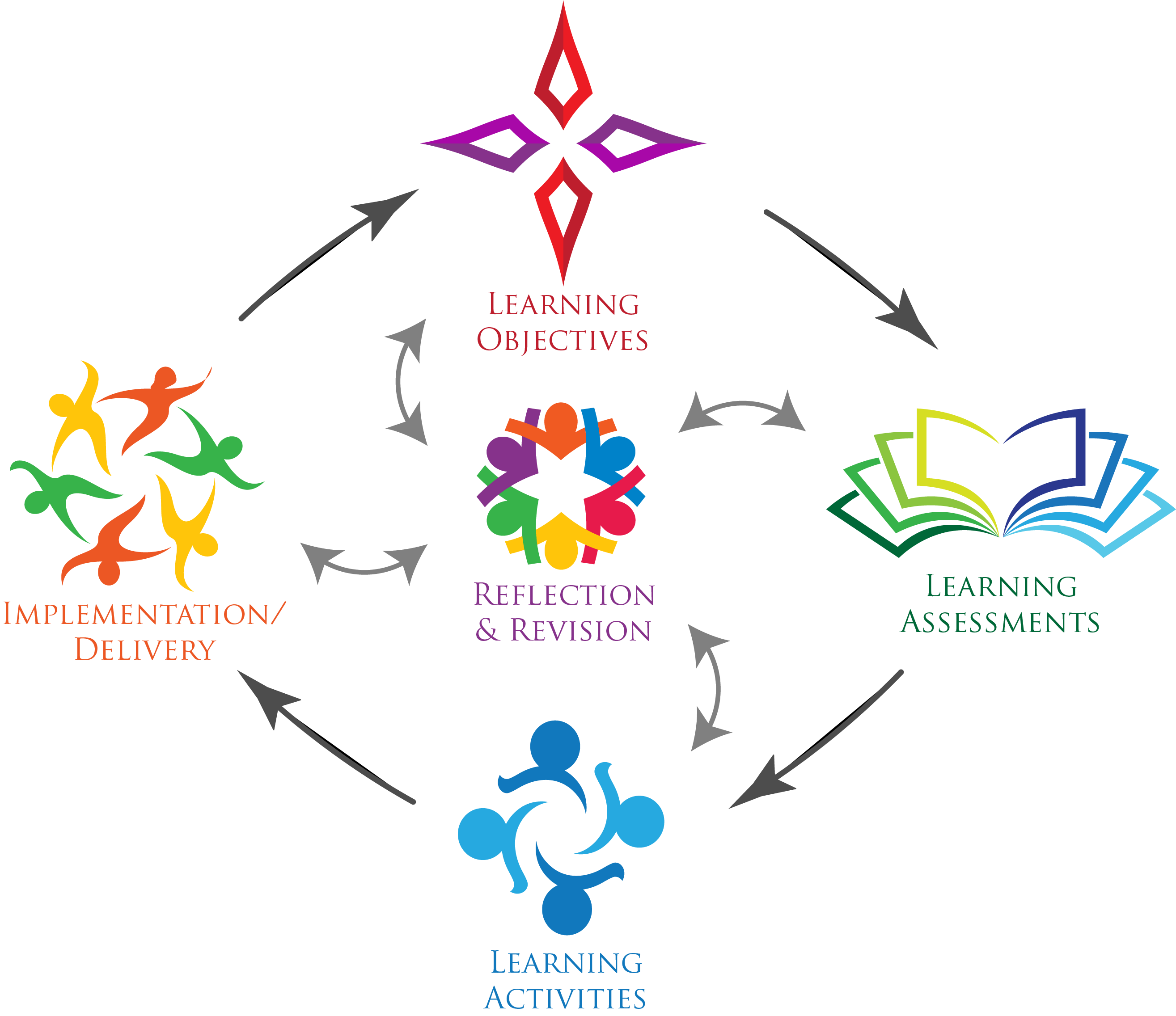Key Component
|
Key Topics
|
Goals for student learning should drive classroom activities and assessments. Start
here to learn more about how to build clear and measurable student learning objectives/outcomes.
|
|
Good teaching attempts to measure students’ progress towards course objectives--both
informally and formally. This section provides information about how to design good
exams, rubrics, and other ways to assess student learning.
|
- Developing rubrics and assessment activities
- Mapping curriculum across a program
|
Good teaching provides multiple ways for students to develop their knowledge through
effective learning activities--discussion, hands-on learning, course readings, collaborative
projects, etc. This section provides a variety of ideas for developing engaging and
effective learning activities.
|
- Tools for learning
- Active and engaged learning
- Lecture-based learning
- Lab-based courses
- Large-enrollment courses
- Discussion-based Courses
- Reflective learning
- Writing-to-learn activities
- Minimizing plagiarism
|
No matter how strong a course’s objectives, assessments, and activities are, those
elements are worthless if they are not delivered thoughtfully. Good teaching takes
into account student characteristics, the mode of delivery, teacher persona, goals
of equity and inclusion, etc. This section provides ideas that can improve day-to-day
delivery of your course.
|
- Course structure and syllabus design
- Modes of delivery
- Course management
- Motivation and engagement
- Inclusive teaching, accessibility, and Universal Design
|
At the heart of course and program revision is ongoing attention to what worked and
what did’t. This section provides materials that can help you evaluate successes and
weaknesses related to objectives, assessments, activities, and implementation.
|
- Reflection as a form of evaluation
- Rubrics, checklists, and other tools for evaluating course design and delivery
|

